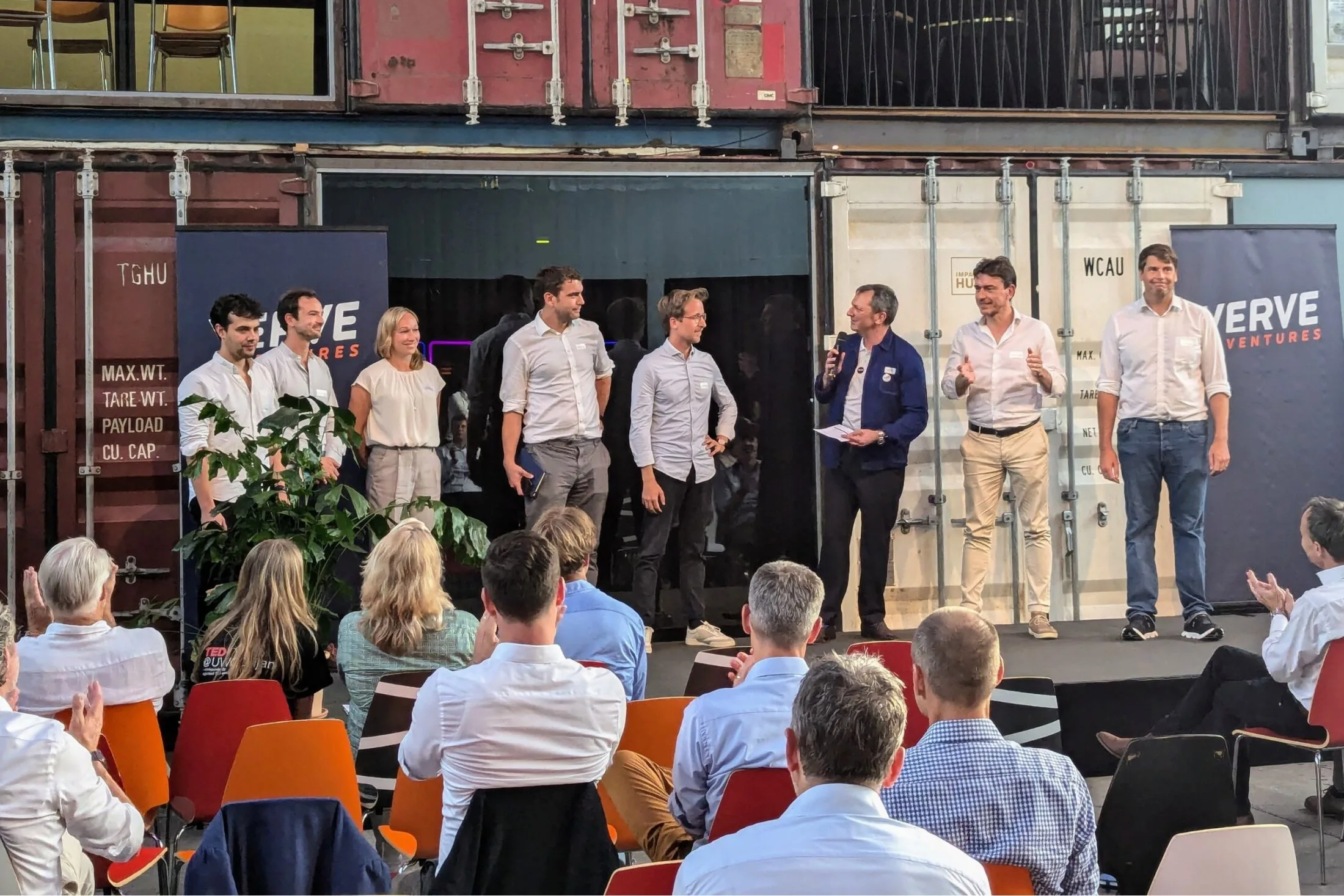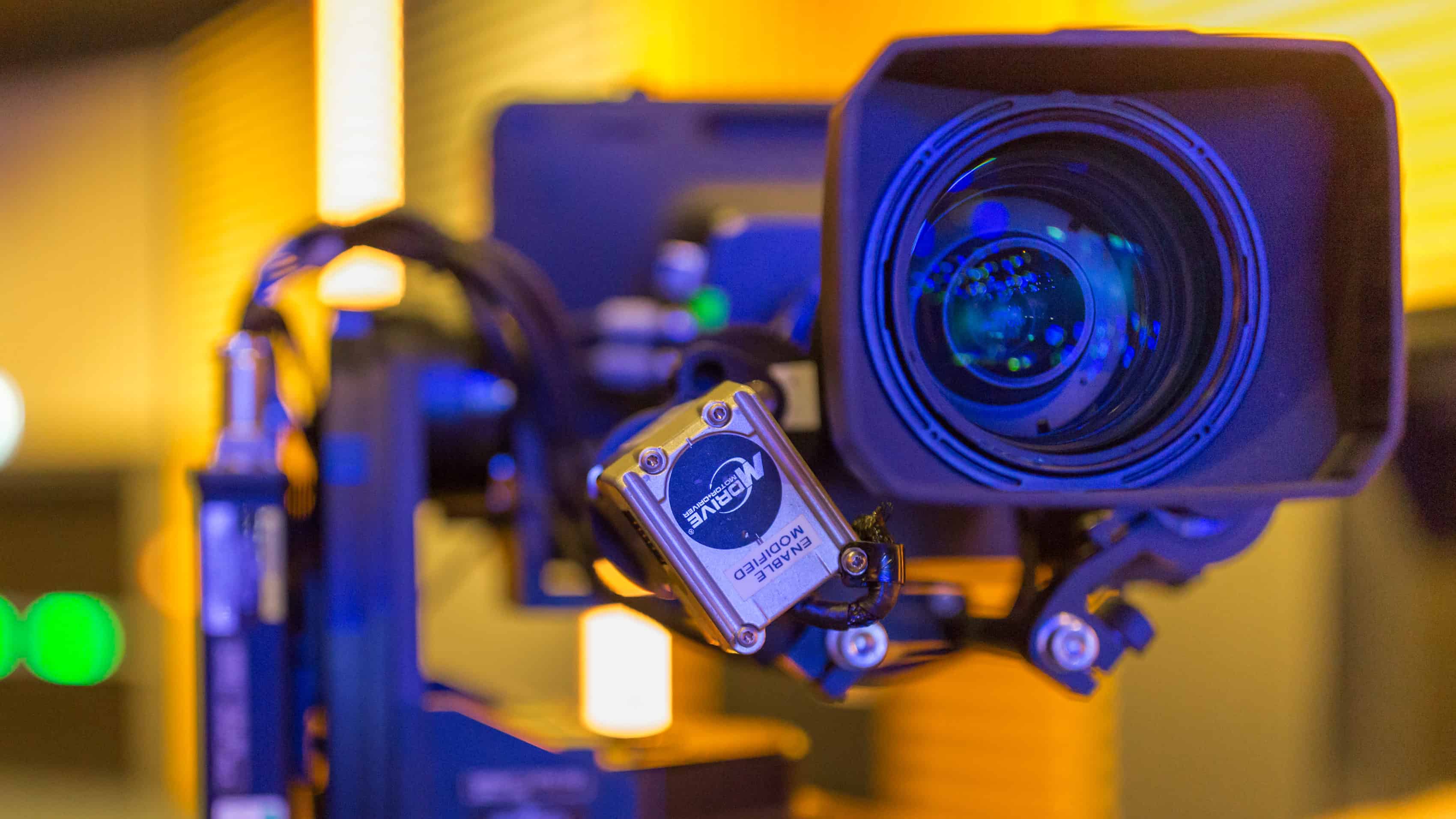PRIVACY POLICY
1. Introduction
1.1. Verve Capital Partners AG ("VERVE") respects Users’ privacy. This Privacy Policy explains (i) what
information VERVE collects through the Users access and use of the Website as well as through the access and use
of the Services; (ii) the use VERVE makes of such information; and (iii) the security level VERVE provides for
protecting such information.
1.2. By expressly accepting this Privacy Policy, the Users agree to the terms and conditions of this Privacy
Policy and are aware that VERVE’s policies may change in the future to adapt to future practices, technology or
modification in the law. All terms not defined herein are defined in the Terms accessible at
https://www.verve.vc/legal.
2. Collected information
2.1. When Users access and use the Services, VERVE collects the specific following personal data and information
("User Information"):
(i) Full name;
(ii) company name, if applicable;
(iii) email address;
(iv) address;
(v) nationality;
(vi) birthday;
(vii) phone number;
(viii) payment information;
(ix) Know Your Client (KYC) data, such as wealth, income, indebtedness capacity, education, past investment
experience, entities controlled by Users, portfolio data within Investiere, certified ID copies, etc.);
(x) IP address;
(xi) visiting date on the Website;
(xii) research criteria;
(xiii) list of the startups viewed on the Website;
(xiv) Users’ interaction with the Services such as their navigation details on the Website, notably without
limitation information about Users’ Web browser, webpages Users visited and saved, and log files; and
(xv) data collected from third-party plugins/websites such as without limitation Facebook, Google, LinkedIn,
Twitter, XING, Keen IO, Intercom, Mailchimp, Sentry, Cloudflare, Amazon Cloudfront, that are provided when Users
submit their User Information through the Services.
2.2. VERVE collects the User Information when Users access and use the Services, in particular:
(i) when Users access and navigate through the Website;
(ii) when Users willingly and voluntarily submit User Information through web forms, by uploading User Content
on
the Website or through the Business Management Tools of the Website, or with their explicit consent by separate
submission outside the Website;
(iii) when Investors submit an inquiry about a startup or Entrepreneur of their interest;
(iv) when Entrepreneurs submit an inquiry about an Investor of their interest;
(v) through third-party plugins/websites; and
(vi) through cookies and other analytics tools.
3. Use of collected information
3.1. The User Information listed in Section 2.1 (i) to (ix) are strictly necessary for VERVE’s core Services, to
provide notably a meeting place for Entrepreneurs of early stage ventures and Investors and enabling Investors
to
invest within such early stage ventures. Users can withdraw at any time theirs consent for such specific data
processing. Please note however that such data processing is strictly necessary to provide the Users the
Services
and that a withdrawal may lead to the drawback that VERVE would not be able to provide and perform properly the
Services any more. In such case, VERVE may terminate the Users’ access and/or use to all or part of the Services
without incurring any liability whatsoever.
3.2. In addition, VERVE collects the User Information listed in Section 2.1 for the following specific purposes:
(i) to provide Users email alerts on interesting early stage ventures;
(ii) to communicate with the Users;
(iii) to provide the Business Management Tools to the Users;
(iv) to fuel a jobs posting section on the Website;
(v) the Users’ subscription to VERVE’s newsletter, in order to provide them further news and updates such as new
early stage ventures matching their interest;
(vi) to provide Users with targeted marketing and advertising tailored to their preferences;
(vii) to offer Users similar Services;
(viii) to re-engage Users accessing and using the Services;
(ix) to improve the Services;
(x) for cybersecurity of the Services; and
(xi) for statistical and planning purposes.
Users can withdraw at any time their consent for the such specific data processing listed in this Section 3.2.
In addition, Users have the rights set forth in Section 10 of this Privacy Policy.
4. Third-party websites
The Website may contain links to other websites. This Privacy Policy does not apply to the practices of any
company or individual that VERVE does not control, nor to any websites that may be linked from the Website.
Users
should carefully review the privacy policies of any websites that Users visit from the Website to learn more
about
their information and privacy practices. The collection and use of User Information or any other personal
information shall be governed by such other party or website’s privacy policy. VERVE cannot be held responsible
for their privacy practices. In particular, the Website contains links to third-party websites such as listed in
Section 2.1 (xv), of which privacy policies can be found on their respective websites.
5. Communication to third parties
VERVE may in some limited instances communicate the User Information to specific third parties, on a strict
need-to-know basis, to achieve the purposes described in this Privacy Policy:
(i) VERVE’s personnel;
(ii) Investors, with respect to Entrepreneurs and vice versa;
(iii) VERVE’s service providers such as the companies listed under Section 4, in particular for targeted
marketing
and advertising;
(iv) competent courts or supervisory or regulatory bodies, when VERVE shall compellingly disclose User
Information, pursuant to any applicable law, regulation or order, e.g. in case of merger, sale or acquisition,
or
in case of bankruptcy and liquidation, if applicable.
(v) VERVE’s IT systems providers, cloud service providers, database providers and consultants;
(vi) business partners with whom VERVE conducts business with, which is necessary to offer the Services jointly
with VERVE; and
(vii) any third-party to whom VERVE assigns or transfers any of VERVE’s rights or obligations.
6. International transfer
User Information may be transferred to and maintained on computers located outside of the Users state, province,
country or other governmental jurisdiction, where the privacy laws may not be as protective as those in Users’
jurisdiction. In submitting such User Information, each User specifically agrees to that transfer.
7. Cookies
7.1. VERVE also uses “cookies” to collect information. A cookie is a small data file that VERVE transfers to
electronic device and is stored on the User’s electronic device. When Users access and use the Services, e.g.
the
Website, the cookie identifies the User’s electronic device. VERVE also uses cookies to measure the traffic to
and
usage of the Services and their different features, and other miscellaneous uses. VERVE’s Cookies Policy is set
forth herein below.
7.2. If Users do not wish to have cookies placed on their electronic device, Users should set their browser or
electronic device to refuse cookies before using the Services, with the drawback that certain features of the
Services may not function properly without the help of cookies.
8. Privacy Policy changes
Any future modifications or amendment to this Privacy Policy and/or to the processing of User Information, as
described in this Privacy Policy, will be notified to Users in advance through an individual notice through
VERVE’s usual communication channels (e.g. by email or communication within their Account) as well as through
the
Website (via banners, pop-ups or other notification mechanisms).
9. Data security
VERVE always strive to ensure security, integrity and privacy of the User Information. VERVE has adopted and
implemented technical and organizational measures to avoid unauthorized access or disclosure of any User
Information.
10. Users’ rights
Users may exercise the following rights under the conditions and within the limits set forth under applicable
law:
(i) the right to access their User Information, as processed by VERVE and, if Users believe that any information
relating to them is incorrect, obsolete or incomplete, to request its correction or update;
(ii) the right to request the erasure of their User Information or the restriction thereof to specific
categories
of processing;
(iii) the right to object to a channel of communication used for direct marketing purposes;
(iv) the right (i) to be informed about any decision making, based the fully automated processing of their User
Information, (ii) to express their view on such decision and (iii) to require that it be verified by a human
being, except if (a) such decision is directly related to the conclusion of an agreement between VERVE and their
request is accepted or (b) if they have given their express consent to such automated decision making; and
(v) the right to request their User Information’s portability, i.e. that the User Information Users have
provided
to VERVE be returned to the concerned User or transferred to the person of their choice, in a structured,
commonly
used and machine-readable format without hinderance from VERVE and subject to their confidentiality obligations.
11. Governing law and jurisdiction
11.1. This Privacy Policy and all matters arising out of or relating to this Privacy Policy shall be governed by
Swiss law at the exclusion of any provisions of conflict of law rules that might lead to the application of
other
than Swiss law.
11.2. Users irrevocably submit to the exclusive jurisdiction of the competent courts of Zug, Switzerland, for
any
conflict arising from or in connection with this Privacy Policy.
12. Questions
For any question about this Privacy Policy or VERVE’s policies, please contact VERVE at info@investiere.ch.
COOKIES POLICY
1. Type of cookies used
1.1. VERVE uses several types of cookies. Some are essential, while other Users can opt out of or block. Opting
out or blocking some cookies may affect the functionality of the Services.
1.2. The below explanations shall help Users to make informed choices about the information Users provide to
VERVE
when Users access and use the Services, in particular when Users visit the Website.
2. Why and how VERVE uses cookies
2.1. There are broadly four reasons why a cookie might be stored on Users’ electronic device when accessing and
using the Services:
cookies that make the Services work properly for Users;
cookies that collect data about Users’ use of the Services which is then used on an anonymous basis to help
VERVE
improve the Services;
cookies that remember the personal preferences and make the Services easier for Users to use;
cookies that are placed by third-party services which allow a full access and use of the Services online. VERVE
has no control over these third-party cookies.
2.2. These cookies are placed on User’s electronic device either by VERVE or by the third parties whose services
Users use as part of the Services.
2.3. Some cookies are retained in the Users’ electronic device for only as long as Users access and use the
Services, while others persist for a longer specified or unspecified period.
3. How to block cookies
Users can restrict or block cookies which are set during use of the Services by changing Users electronic
device's
or browser’s settings. For more detailed information, see http://www.AllAboutCookies.org. Some Services may not
work if Users completely disable cookies, but many third-party cookies can be safely blocked. Check also
information in User’s browser's help section for specific instructions on how to manage cookies.
4. Strictly necessary cookies
Some cookies VERVE places on the User’s electronic device ensure that the Services, deliver the information
and/or
Services securely and optimally. Users must accept these cookies to be able to make access and use of the
Services.
5. Functionality cookies
Some cookies enable websites to remember choices persons make, for example, user name, and language or text
size.
These cookies are known as "functionality cookies" and help to improve a person's experience of a website by
providing a more personalized service.
6. Performance cookies
VERVE uses a number of tools that monitor User’s access and use of the Services to help VERVE improve and
customize the provided information and/or Services. In particular the Website uses the Cookie Google Analytics
which collects information and reports website usage statistics without personally identifying individual
visitors
to Google. Users can opt out of providing VERVE with this information if User wishes so, with no impact on
User’s
experience of the Website. To opt out of being tracked by Google Analytics when using the Website:
https://tools.google.com/dlpage/gaoptout/.
7. Third-party cookies
7.1. The Services use third-party services or software. Many of these services may set cookies on Users’
electronic devices.
7.2. Users can block or remove cookies themselves by altering the settings of their electronic devices or
browsers. Blocking these cookies is unlikely to impact on User’s experience of the Services.
Used to provide statistics about user's activity on the site
Used to provide chat functionality in application and targeted newsletters
Used to provide statistics about the user experience on the site
Used to collect and analyze data about the user behavior on the site




